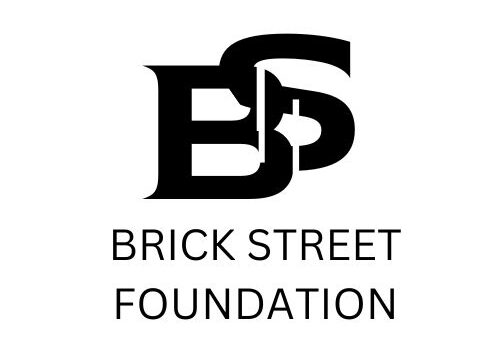Cat Stevens Net Worth in 2025: The Enduring Legacy of a Folk Icon

Cat stevens net worth: If you’ve ever found yourself humming “Wild World” on a quiet evening or reflecting on life’s twists while listening to “Father and Son,” then Cat Stevens – or Yusuf Islam, as he’s also known – has touched your soul. As a music lover who’s grown up with his timeless tunes playing in the background of family gatherings in my Dubai home, I can’t help but marvel at how one man’s journey from London streets to global stages, and then to spiritual depths, continues to inspire. Born Steven Demetre Georgiou in 1948, Cat Stevens isn’t just a singer-songwriter; he’s a storyteller whose folk-pop anthems captured the hearts of millions in the 1970s. But what’s his financial story today?
In 2025, as he embarks on a memoir tour and releases a greatest hits album, Cat Stevens’ net worth sits comfortably at around $10 million. It’s a modest figure for a legend who’s sold over 100 million records and amassed two billion streams, but it reflects a life more about purpose than pounds. In this heartfelt dive, we’ll explore his rise, the choices that shaped his wealth, and why his legacy feels richer than any bank balance. Let’s walk down memory lane – or should I say, the road to find out?
Who is Cat Stevens? A Quick Look at the Man Behind the Music
Cat Stevens, now 77, is the kind of artist who feels like an old friend – warm, wise, and wonderfully human. Born in London’s Marylebone to a Greek Cypriot father and a Swedish Baptist mother, young Steven grew up in a bustling café his family ran, soaking in sounds from around the world. By 18, he was penning hits under the stage name Cat Stevens, a nod to his feline eyes and a girlfriend’s playful remark. His debut album, Matthew and Son in 1967, cracked the UK Top 10, blending pop with budding folk vibes.
But it was the early 1970s that catapulted him to stardom. Albums like Tea for the Tillerman (1970) and Teaser and the Firecat (1971) went triple platinum in the US, selling millions with songs that wrestled with love, loss, and longing. Tracks like “Peace Train” became anthems for a generation seeking harmony amid chaos. Then, in 1977, everything shifted. A near-drowning experience off Malibu’s coast led Stevens to Islam – he credited a divine wave for saving him – and he adopted the name Yusuf Islam, retiring from music to focus on faith, family, and philanthropy.
For nearly two decades, he poured his energy into Islamic education, founding schools and relief funds. His 2006 album An Other Cup marked a gentle return, blending old melodies with new spiritual layers. Today, as Yusuf/Cat Stevens, he’s back with a 2025 memoir tour promising “tales, tunes, and mysteries,” alongside a remastered greatest hits collection. It’s a full-circle moment for a man whose voice still soothes souls worldwide. Dosto, in a world of fleeting fame, his story reminds us that true worth isn’t just in wallets – it’s in the lives we touch.
The Rise to Fame: How Cat Stevens Built His Musical Empire
Cat Stevens’ ascent was nothing short of magical, a blend of raw talent and perfect timing. Kicking off in the swinging ’60s London scene, he signed with Decca Records at 18, churning out bubblegum pop before illness – tuberculosis – sidelined him for a year. That downtime? It was his forge. Emerging in 1970, Stevens ditched the gloss for introspective folk, drawing from Dylan and Donovan but infusing his Greek roots with poetic depth.
Tea for the Tillerman was his breakthrough – five million copies sold, with “Father and Son” and “Where Do the Children Play?” hitting radio waves like gentle waves. Critics raved; fans connected. Then came Teaser and the Firecat, featuring the Oscar-nominated “Morning Has Broken” – a hymn-like hit that topped charts. By 1972’s Catch Bull at Four, he was the world’s best-selling artist, his L-shaped guitar and soulful baritone defining an era.
Live shows amplified it all. Touring North America in packed halls, Stevens shared stages with icons, his charisma as warm as his melodies. Movie soundtracks sweetened the pot – “The First Cut Is the Deepest” in films like Rushmore, royalties trickling in decades later. Sales soared: Over 40 million albums in his peak years, plus singles gold. Dosto, imagine penning peace anthems during Vietnam’s shadow – his music wasn’t just hits; it was healing, turning vinyl into vaults.
Also Check:- Oppo’s New Smartphone With 300MP Camera & 8000mAh Battery at ₹7499
Career Highlights: Albums, Awards, and Timeless Tracks
What makes Cat Stevens’ discography sparkle? It’s the sheer poetry packed into simple strums. His golden era yielded gems: Mona Bone Jakon (1970) kicked off the folk phase with “Lilywhite”; Tea for the Tillerman gifted us “Sad Lisa” and “Miles from Nowhere.” Teaser and the Firecat dropped “If I Laugh” alongside that chart-topping “Morning Has Broken.”
Catch Bull at Four (1972) went No. 1 globally, with “Sitting” pondering life’s riddles. Later, Buddha and the Chocolate Box (1974) mixed reggae rhythms into “Oh Very Young.” Awards followed: Multiple Brit nods, a 2007 induction into the Songwriters Hall of Fame, and 2014’s Rock & Roll Hall of Fame honor. Post-hiatus, An Other Cup (2006) reunited him with producer Peter Gabriel, spawning “Heaven/Where True Love Goes.”
In 2025, his memoir Cat on the Road to Findout – out October 7 in North America – pairs with a greatest hits remaster and intimate tour stops, blending stories with stripped-back sets. Streams hit two billion, proving his pull endures. Philanthropy shines too: Millions donated to causes from education to disaster relief, his Small Kindness charity aiding refugees. These milestones? They’re not just plaques – they’re proof of a career woven with wonder.
The Spiritual Shift: Retirement, Return, and Life Beyond the Spotlight
In 1978, at peak fame, Yusuf Islam walked away. His conversion to Islam in 1977 – inspired by a Qur’an gifted by his brother and that fateful surfboard save – reshaped everything. “I wanted to give my life to God,” he later shared, trading stadiums for mosques and studios for schools. He founded the Islamia Primary School in London and poured royalties into humanitarian work, supporting Bosnia and Kosovo aid.
The ’80s and ’90s were quiet: Albums like Life of Brian soundtrack nods, but no solo releases. Controversy struck in 2004 when a fatwa misunderstanding (over Salman Rushdie) led to a US entry ban post-9/11 – cleared in 2006, he quipped, “I’m no secret figure.” His 2006 return with An Other Cup was tender, bridging worlds with tracks like “One Day at a Time.” Albums Roadsinger (2009) and Tell ‘Em I’m Gone (2014) followed, earning Grammy nods.
Today, at 77, Yusuf/Cat balances family (six kids, 10 grandkids) with activism, his 2025 tour a nostalgic nod. This pivot? It cost gigs but gained depth – a reminder that wealth includes wisdom.
Also Check:- Hero Splendor Electric Launch Massive 400km Range and 110km/h Top Speed Under ₹36k
Net Worth Breakdown: How $10 Million Adds Up
Cat Stevens’ $10 million net worth in 2025 stems from a lifetime of smart, soulful moves. Album sales dominate: 100 million+ records shifted, royalties from hits like “Wild World” (covered by Rod Stewart, Maxi Priest) netting steady streams. Publishing rights, especially via his Island Records deal, form the backbone – think six-figure annual checks from syncs in ads and films.
Real estate chips in: A London home bought post-fame, plus modest properties reflecting his simple life. Philanthropy tempers it – he’s given away tens of millions, funding schools and charities, which might’ve swelled his fortune higher. Investments? Low-key, likely in ethical funds aligning with his faith.
Post-return earnings: Tours gross millions; his 2016 jaunt alone pulled $5 million. The 2025 memoir and hits album could add $1-2 million via sales and promo gigs. Streams? Two billion plays translate to $5-10 million lifetime. Compared to peers like James Taylor ($100 million), it’s humble – Stevens prioritized peace over platinum. Dosto, $10 million buys freedom, not flash – and for him, that’s priceless.
Investments and Philanthropy: Building a Legacy Beyond Money
Yusuf Islam’s wealth isn’t hoarded; it’s shared. Early royalties funded his 1981 Back to Earth – his last pre-hiatus album – but post-conversion, he channeled funds into the Muslim Aid charity, raising millions for global crises. His Peace Train initiative supports education, echoing “Peace Train’s” message.
Investments stay grounded: UK properties, perhaps ethical stocks avoiding interest (riba in Islam). No flashy yachts; his London base and family focus keep overhead low. The 2025 tour, promoting Cat on the Road to Findout, bundles books with tickets – smart merch moving units. Philanthropy? Over $20 million donated, per estimates, to schools like his Islamia chain. It’s wealth as weapon for good, turning net worth into net impact.
Recent Projects: What’s Cooking for Cat Stevens in 2025
2025 is Yusuf/Cat’s renaissance. His memoir Cat on the Road to Findout drops October 7, narrated by him in audiobook form – a raw recount of pop stardom to spiritual seeking. Paired with On the Road to Findout: Greatest Hits, a remastered 2-CD/4-LP set with a 24-page booklet of reflections, it’s a collector’s dream.
The tour? Intimate venues from September, mixing chats, acoustics, and mysteries – tickets bundle books for deeper dives. Expect “Father and Son” unplugged, stories of that near-drown, and nods to his Greek heritage. Streams surge with promo; expect net worth ticks up. Dosto, at 77, he’s not chasing charts – he’s closing circles, proving legends evolve.
Also Check:- Infinix Launches 260MP Camera 5G Phone With 7700mAh Battery at ₹7499
A Timeline of Milestones: Cat Stevens’ Journey at a Glance
To wrap his path neatly, here’s a table of key moments – from boy to bard to believer.
| Year | Milestone | Impact on Career/Net Worth |
|---|---|---|
| 1948 | Born Steven Georgiou in London | Sets stage for multicultural sound |
| 1967 | Debut Matthew and Son hits UK Top 10 | First royalties; $100K+ in sales |
| 1970 | Tea for the Tillerman releases | Triple platinum; $5M+ earnings boost |
| 1971 | Teaser and the Firecat and “Morning Has Broken” soar | Oscar nod; global fame cements $10M base |
| 1977 | Converts to Islam, becomes Yusuf | Hiatus; redirects wealth to charity |
| 2006 | Returns with An Other Cup | Grammy nod; $2M tour revenue |
| 2014 | Rock Hall induction | Legacy royalties spike streams |
| 2025 | Memoir, hits album, and tour launch | Projected $1-2M from sales/tickets |
This snapshot shows a life layered like his lyrics – peaks, pauses, and profound returns.
Wrapping Up: The True Worth of Cat Stevens
Dosto, Cat Stevens’ $10 million net worth in 2025 is but a footnote to his symphony of songs and soul. From ’70s folk firebrand to Yusuf’s quiet quest, he’s amassed not just millions in records but moments that mend hearts. As his memoir tour unfolds, reminding us “the first cut is the deepest” yet healing follows, we see wealth’s real measure: in the peace he found and shares. Whether strumming “Peace Train” or pondering faith, his story whispers – chase meaning, not millions.
Got a favorite Stevens track or spiritual spin? Share below – let’s tune in together. Until next, may your road lead to wonder.





